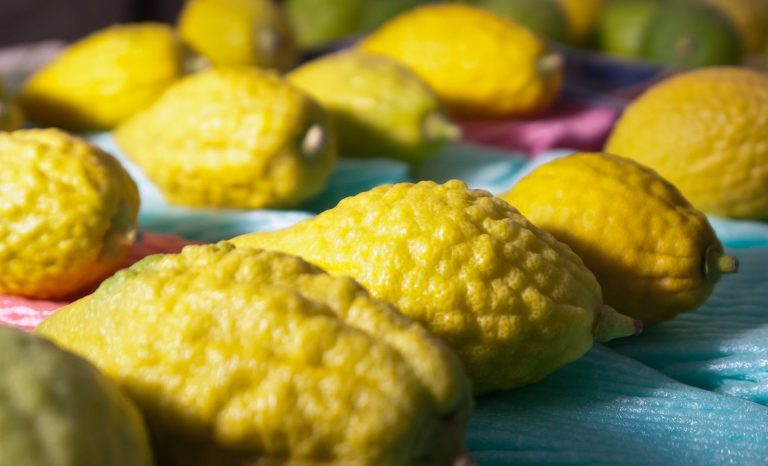
[ad_1]

Growing up in an assimilated Jewish home, ignorant of the most fundamental observances of Judaism’s holy days, I didn’t even know what an etrog was. It takes considerable learning to appreciate the holy fruit is a fair value at $55. I’ve been engaging in that self-education, one mitzvah at a time, for a few decades.
My earliest memory of Sukkot (I dislike the goofy and goyish translations of tabernacles or booths) was at our neighbourhood synagogue where, on a dare, I downed 13 paper cups of sickly sweet Manischewitz wine. Returning home with my head exploding, I vomited, then slept the rest of the day.
Living in Israel in the 1980s, I became better acquainted with the joy-filled holiday. There millions of apartment dwellers become instant carpenters, fashioning a bewildering array of Sukkot shelters on their balconies, lawns and even sidewalks.
It goes without saying that Orthodox Jews universally observe the holiday. Apartments in religious neighborhoods are designed with balconies offering an unobstructed view of the sky, in accordance with Jewish ritual law.
What surprised me is how widespread the celebration of the festive holiday is among Israel’s so-called secular majority. The festive holiday — which recalls both the temporary dwellings of the nomadic Israelites as they wandered in the Sinai Desert for 40 years and the harvest huts in which Jews’ agricultural ancestors once lodged — is also called “z’man simhateinu” (the season of our rejoicing).
Israelis use Sukkot as an opportunity for entertaining and traveling — a counterpoint to the spiritual solemnity of Rosh Hashana and Yom Kippur. In fact, the country grinds to halt for a week. Schools close, and many businesses are open only half days. It’s comparable to the United States during the week between Christmas and New Year’s Day. Coca-Cola even runs ads across Israel showing people drinking the real thing al fresco in their sukkah.
My initial attempt at constructing a sukkah involved lashing the brooms and mops of our Jerusalem apartment to the balcony, wrapping this frame with bed sheets, then covering the opening with “skhakh” (thatching) from the bushes in the garden. While the shaky — and not entirely satisfactory — structure reflected the impermanence of our frail lives, it also brought home that one only reaps what one has sown.
Returning to Canada in 1986, I called a plumbing supply store with a Gentile-sounding name I found in the phone book. After describing at some length a contraption of pipes that would assemble together, the non-Jewish clerk cut me short and exclaimed, “Oh, you mean a sukkah. Why didn’t you just say so?”
As my sukkah has grown, so too has my observance of the mitzvah of “ushpizin,” an Aramaic word meaning symbolic guests related to the English word “hospitality.” According to the Kabbala, Abraham, Isaac, Jacob, Joseph, Moses, Aaron and David are invited — one each day.
Typically, Israelis invite friends and neighbors for meals and desserts. Last year, we had more than 100 guests — Jewish, Christian and Muslim — at an elaborate open sukkah celebration featuring barbecue.
[ad_2]
Source link